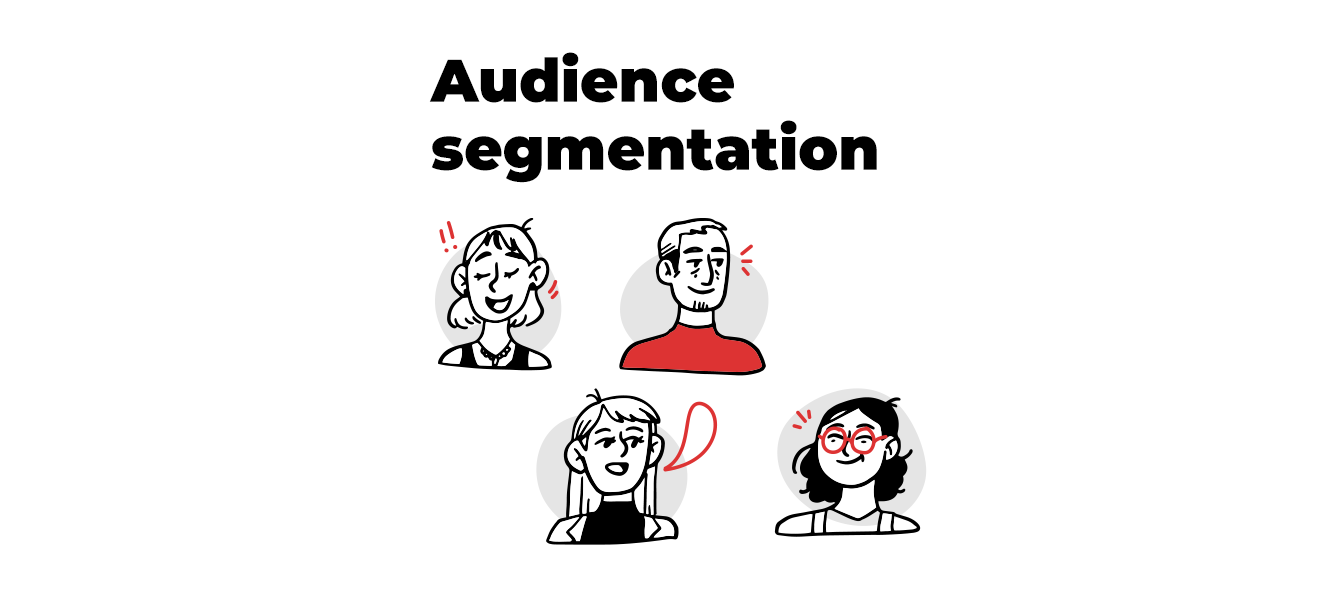For a well-developed strategy you’ll also need well-developed audiences. You never know when you will need a certain audience, and for that you need to see in the future and save from the beginning your audience for all sources of traffic. Take into account the user’s membership duration in that audience and create lists for all available periods because you never know when you will need a particular user who may disappear if you only use 30 days lists.
What is audience segmentation?
It represents the process by which you can create several subgroups of people belonging to an identified target group, in order to be able to offer personalized messages and offers, but also to set strategic objectives for each one. This segmentation can be done at the demographic, behavioral or interest level, or through a combination of them.
By segmenting the audience, you have the possibility to understand and, by default, to be able to choose the users who are most likely to meet the goals set from the beginning of your campaign. It is important to understand who the target audience is in order to understand their needs and to consider that not everyone needs to be targeted. Thus, we can say that the emphasis is on the chosen marketing strategy.
Why segment your audience?
First of all, you can make the best possible decisions based on data. By framing each user in a certain segment, you will know exactly who brought you benefits and where you need to allocate more resources.
Secondly, you have the opportunity to create personalized messages that can give you the chance to create a close relationship between the organization and the customer, thus gaining the trust of consumers. When the user feels that a message is written for him, he is much more attracted to it and there is a much higher chance of becoming a customer, maybe even a loyal one.

Understand the consumer
Before you get down to business, take a seat and understand your own client. The better you understand him, the more efficient you will be in communicating with him. Try to discover the needs and reasons why they would choose you, try to be the customer yourself. By doing this you will be able to give them what they really need and you may discover certain aspects of the product that should be improved.
Be careful how you use exclusions
To create the audience segments you want, exclusions can be your best friend, but also your biggest enemy. There is a possibility that when we make exclusions we limit the audience a lot, our ads reaching too few people or even none. We need to keep in mind the size of the target audience, but also the size of the excluded audience so that our campaign has enough users at the end to optimize.

Use a Multichannel strategy
Nowadays, more and more social platforms are being created, and the public is starting to be much more selective. Identify where your user is, analyze the steps he or she takes before conversion, and greet him or her with a personalized message based on the steps in the conversion process. Create a diversified and well-developed strategy to be with the potential consumer with the right message in the right place.
Monitor your data for success
As you research and analyze your data, you can better understand the variety of processes in the segmentation system. It is important to respond to the data obtained and to use the data previously discovered in your ongoing research, so you can more easily and effectively evaluate the dynamics or even make predictions.
Audience segmentation data allows you to understand the most effective messages addressed to a certain type of target audience. In other words, we can say that by correctly segmenting audiences we create a database for constant optimizations.
Never limit yourself to the audiences you have created. Some audiences may work for one campaign, but not for another one. Keep only the results and always test something new until you reach the combination that gives you the results you want.

A/B Tests
Once you’ve chosen your audience, it’s time to think about the messages you’ll display. An offer or a certain message may be good for one user, but not for another. To achieve the desired results, always test two ad variants that have some differences. In addition, you will have more varied messages and you will not bore users with the same texts. Moreover, you also discover which of the strategies used need optimization and you can understand how well you meet the needs of users.
Set your goals
Each audience should have its own goal, and each of these goals should be closely related to the company’s main objective. Set these goals carefully, and later they can help you identify certain weaknesses in the conversion process. For example, set up a prospecting audience to bring you new users to the site, then take those users and guide them to conversion by going through each step of the funnel.
Don’t forget about current customers
They are the ones who brought the company to where it is now so don’t forget about them. They are the users more likely to convert, because they already know the product and trust the organization. In addition, they can recommend you to potential customers so you should reward this. Make them feel special. Even if you can’t offer them personalized offers, involve them in certain games on social media pages and show that you care about them.
Practice makes perfect
Once you have mastered the art of segmenting audiences on a single channel, you will realize that you have barely discovered a small part of what advertising has to offer. It is recommended to use as many channels as possible to increase the coverage and reach your target consumers. If a certain audience segment has given remarkable results on a certain channel such as Google, it does not mean that automatically the same audience segment will be successful on another channel such as Facebook. There are different stages of the marketing funnel, so depending on each stage you can see various opportunities or even challenges, which is why you have to constantly test with new ideas.
Audience segmentation will help you make the right decisions in terms of campaign performance, but in order to segment your audience as well as possible, you need to understand the customer and set your goals carefully. The key to success is testing, both in terms of targeting and in terms of communication. Don’t be discouraged if something doesn’t come out right away and always test something new.

